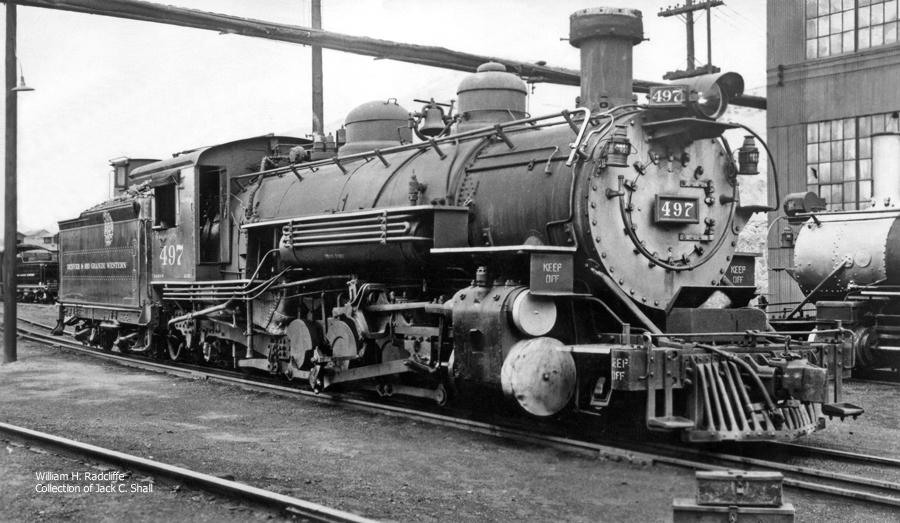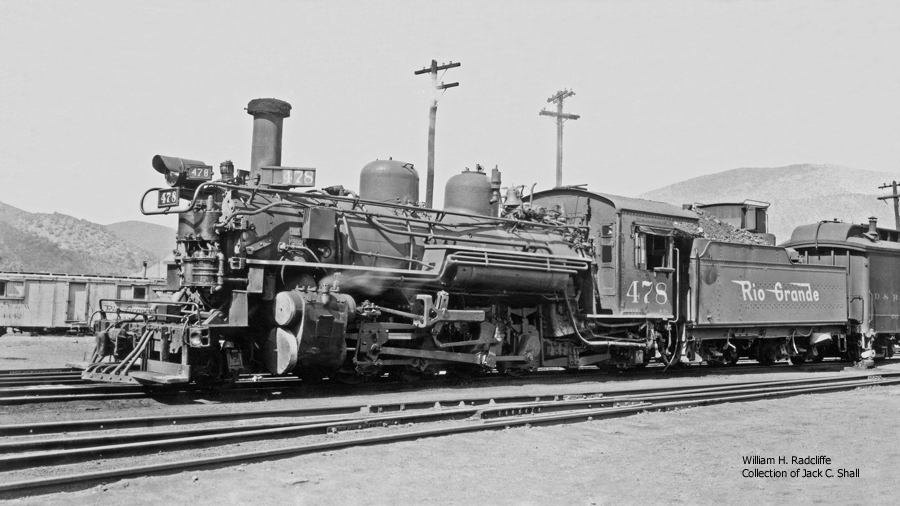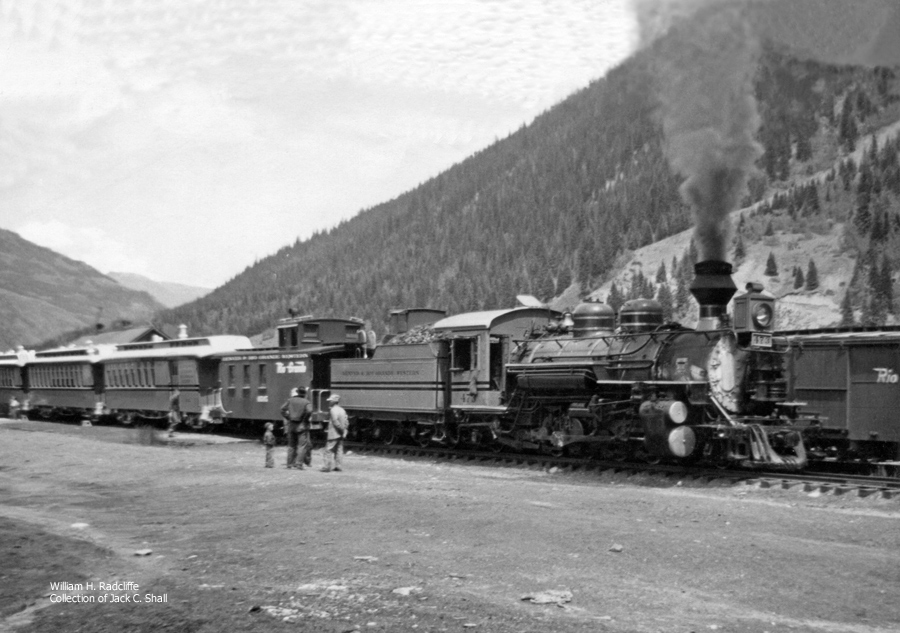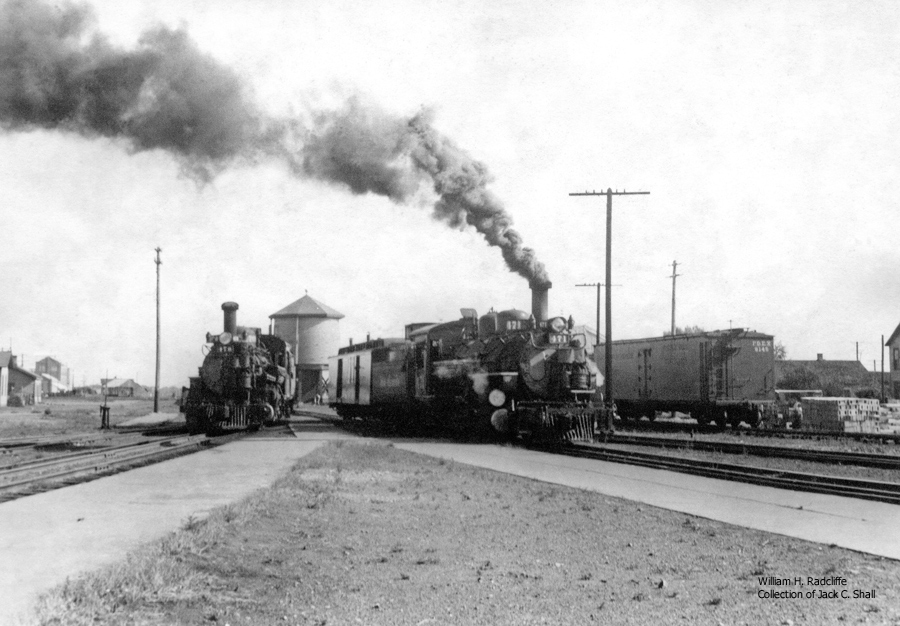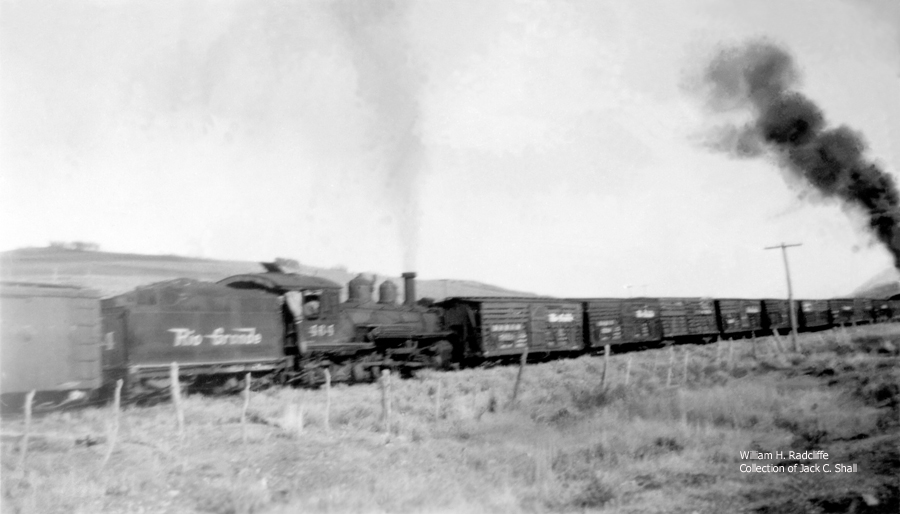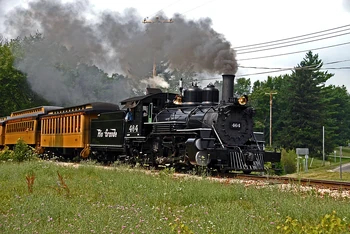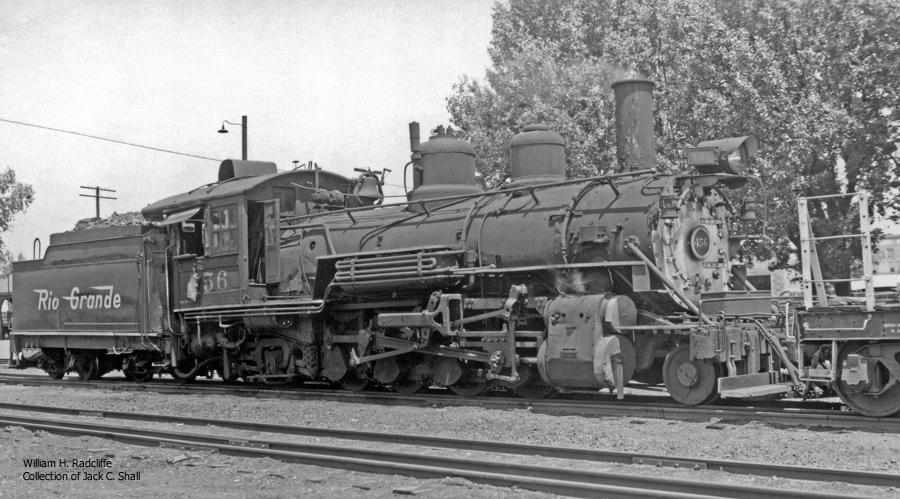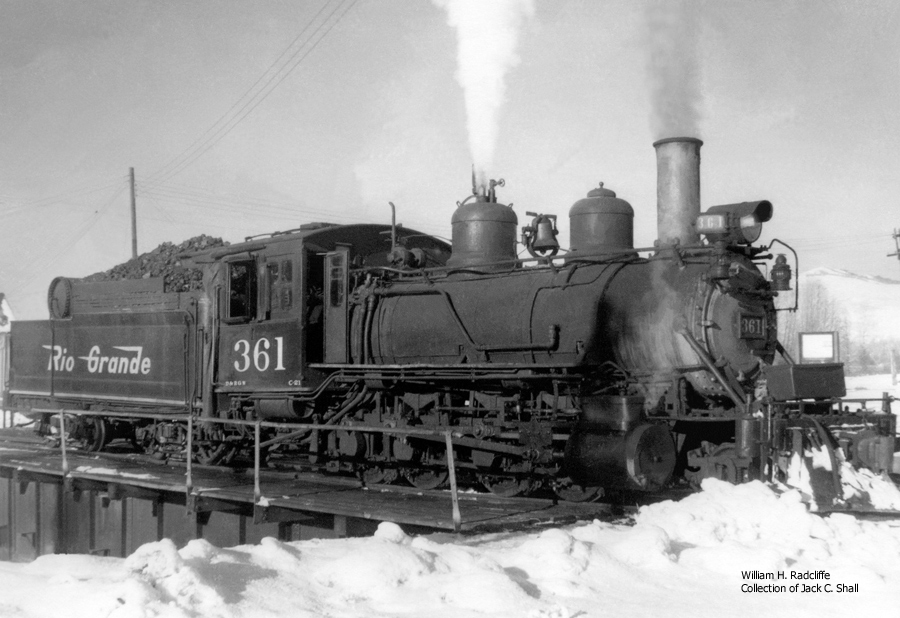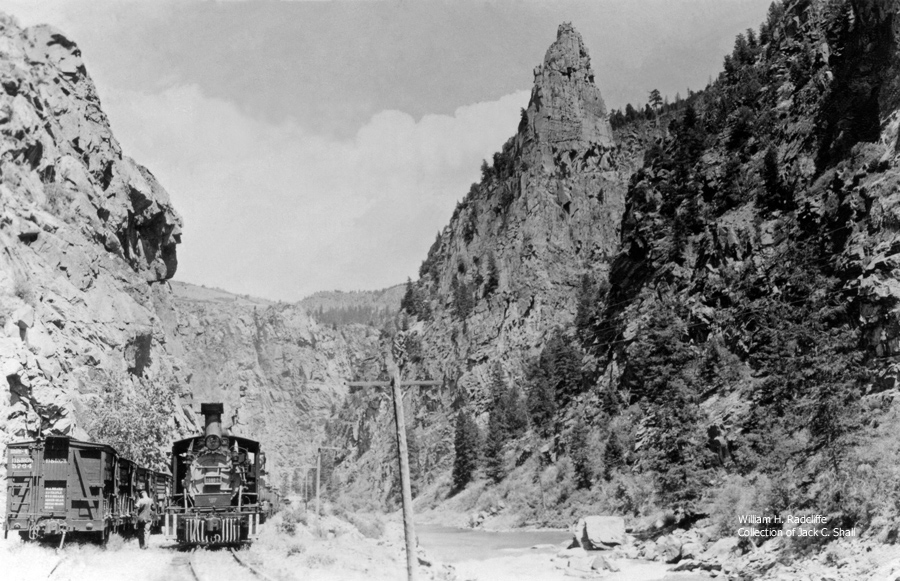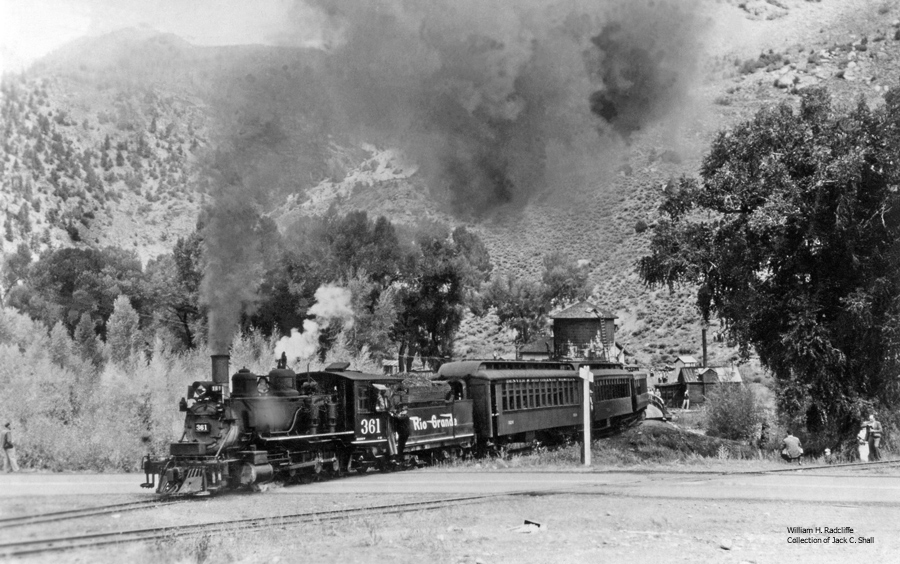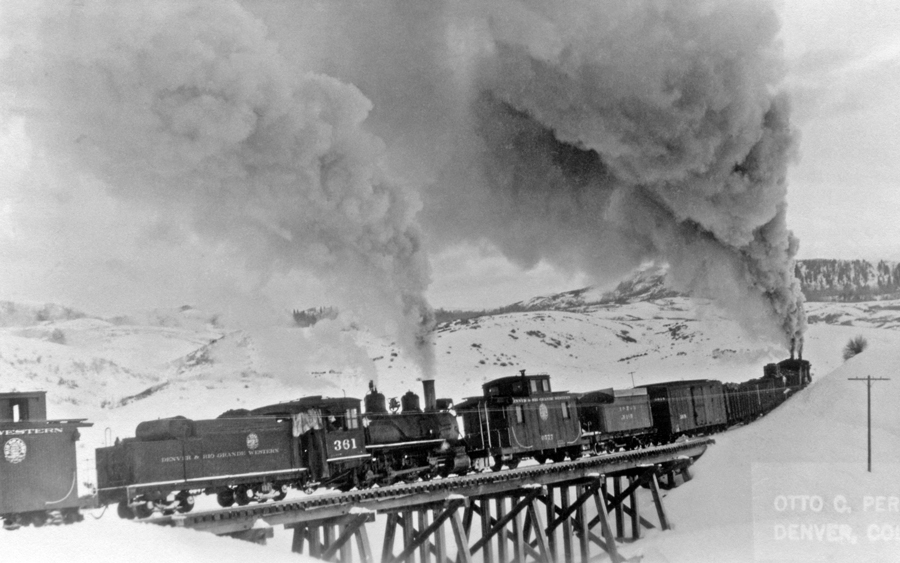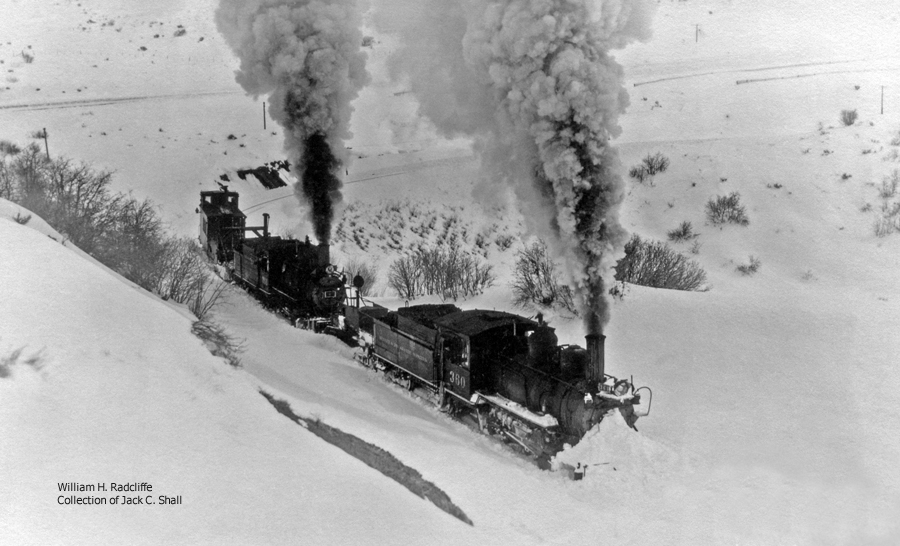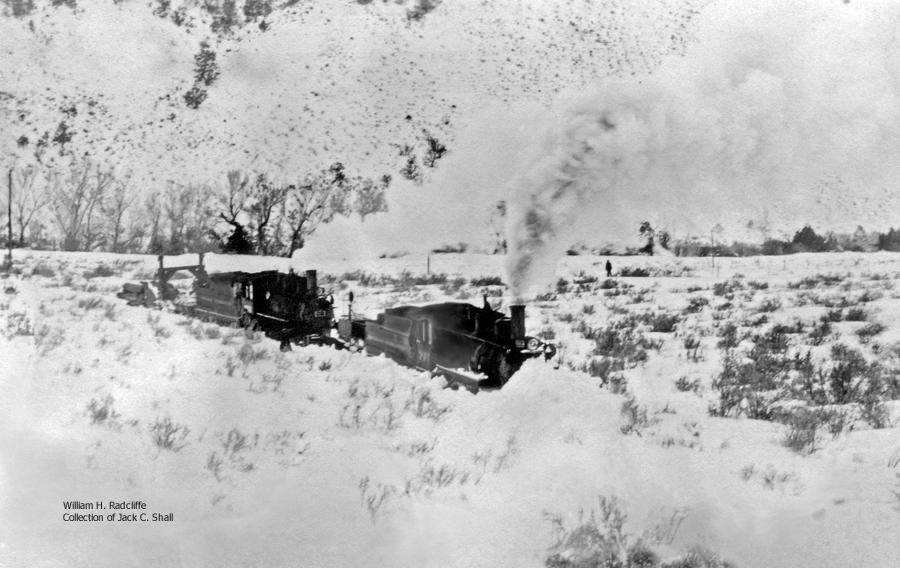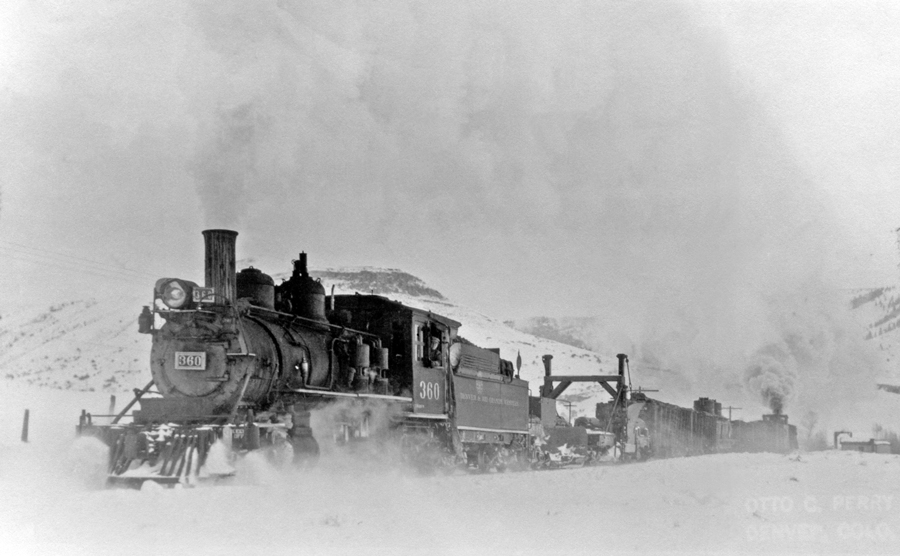In July of 1938 Mr. Radcliffe photographed D&RGW 2-8-2 locomotive #497 at rest in the shop area at Salida, Colorado. She is a class K-37, the most powerful of all the narrow gauge locomotives on the Rio Grande.
The #497 has an interesting story behind it. She is one of ten class K-37 locomotives that were built using components from standard gauge locomotives. In 1902 Baldwin constructed for the Denver & Rio Grande the class 190 2-8-0 locomotives (later re-classed to C-41 after rebuilds). These were used as the starting point to build the new class K-37 locomotives. Using their boilers, along with new 2-8-2 frames and wheels supplied by Baldwin, the D&RGW constructed the new class K-37s in their Burnham Shops located in Denver. The #497 was built in 1930 from former standard gauge locomotive #1003. She was retired sometime in the 1960s, and in March 1981 she went to the Durango & Silverton tourist railroad. In 1991 she was traded to the Cumbres & Toltec Scenic Railroad in exchange for their K-36 #482. The latest I’ve heard, she is stored serviceable – her flue time expired at the end of 2003.
